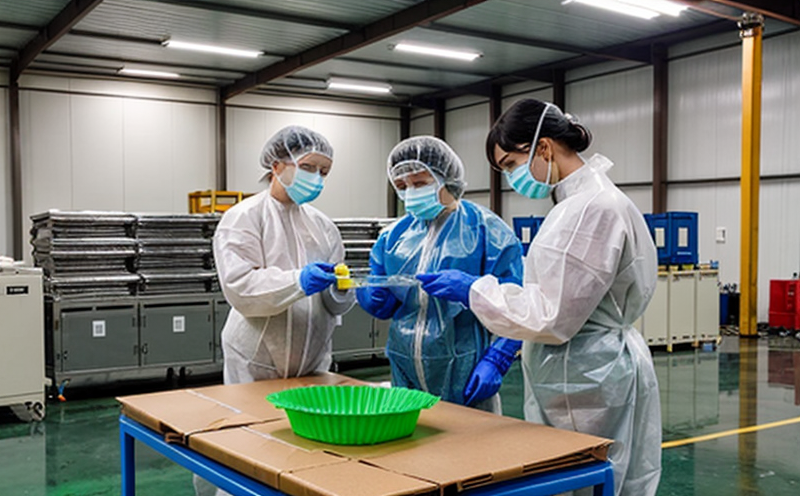ISO 178-2 Flexural Modulus Testing
The ISO 178-2 flexural modulus test is a critical procedure in plastic packaging testing, used to determine the stiffness of materials under bending stress. This test provides essential information for quality managers, compliance officers, and R&D engineers involved in developing or evaluating plastic packaging products.
During this test, specimens are subjected to controlled bending forces at specified temperatures and rates of loading. The flexural modulus is calculated as the slope of the linear portion of the stress-strain curve obtained from the test. This parameter helps in understanding how a material behaves under mechanical stress, which is crucial for ensuring that packaging materials meet required durability standards.
The choice of testing conditions (temperature, loading rate) can significantly influence the results and should be carefully selected based on the intended use and environmental conditions of the plastic packaging. This test is particularly useful in industries where flexibility and strength are key factors, such as food packaging, pharmaceuticals, and consumer goods.
The mechanical properties obtained from this test contribute to the overall quality assurance process, ensuring that products not only meet regulatory requirements but also perform optimally under real-world conditions. The accurate measurement of flexural modulus can help in optimizing material selection and design, leading to more efficient production processes and improved product performance.
The ISO 178-2 test is not limited to plastic packaging; it applies broadly across various industries where plastic materials are used for structural integrity. This includes automotive components, electrical insulation, and consumer electronics, among others. The results from this test can be used in conjunction with other mechanical tests like tensile strength or impact resistance to provide a comprehensive understanding of material performance.
Applied Standards
| Standard | Description |
|---|---|
| ISO 178-2:2019 | Determination of flexural modulus of plastics by means of three-point bend test. |
| ASTM D790-18 | Standard Test Methods for Flexure Properties of Unreinforced and Reinforced Plastics and Electrical Insulating Materials. |
Environmental and Sustainability Contributions
The ISO 178-2 test plays a vital role in the environmental sustainability of plastic packaging by ensuring that materials used are robust enough to withstand the rigors of transportation, storage, and end-use conditions. By accurately determining the flexural modulus, manufacturers can select appropriate materials that balance strength with weight, thus reducing the overall environmental impact without compromising product integrity.
Understanding the mechanical properties of plastic packaging through this test helps in designing more efficient recycling programs. Knowledge about how a material behaves under stress allows for better prediction of its lifespan and recyclability. This contributes to the circular economy by enabling manufacturers to produce products that are easier to recycle or repurpose at the end of their lifecycle.
The test also supports sustainable practices by aiding in the development of biodegradable alternatives. By comparing the flexural modulus of conventional plastics with new eco-friendly materials, researchers can identify which materials best meet both performance and environmental criteria. This information is crucial for industries looking to reduce their carbon footprint while maintaining product quality.
Use Cases and Application Examples
| Application Example | Description |
|---|---|
| Film Packaging for Food Products | The flexural modulus is used to ensure the film can withstand bending during packaging and handling, preventing tears or breaks that could lead to contamination. |
| Plastic Containers for Pharmaceuticals | This test ensures that containers maintain their structural integrity under various storage conditions, protecting the product from damage. |
| Bottles for Beverage Industry | The modulus value is critical in designing bottles that are both strong and lightweight, optimizing material usage while maintaining durability. |





